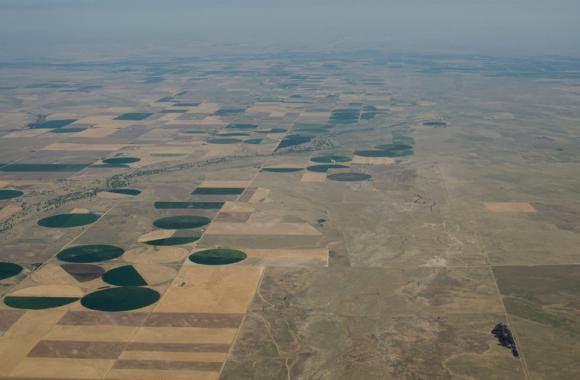Growing up in Arkansas, we knew where our water came from. A plastic pipe allowed water to gravity flow from a nearby spring to a concrete water tank next to our house. Overflow from the spring formed a creek which we dammed to form a seven acre pond that we used to supply water for irrigation, livestock, fishing, and swimming.
Our system was simple. When rainfall was low, the flow from the spring was less and the pond levels dropped, and we knew that we had to conserve.
A WATER CONSTRAINED WORLD
Of course, most of us no longer live this way, and that tends to disguise the fact our growing population is using more water than the planet can supply. Our pond is low, but we don't know to conserve.
According to a recent World Bank report, 1.6 billion people on Earth already live in nations that are subject to water scarcity. Combined with a population projected to grow to 9.7 billion by 2050, our society will be straining an already stretched agricultural ecosystem, exacerbated by weather volatility and record dry spells.
If current trends in water usage, weather volatility, and population growth continue, we can expect a 50 percent increase in agricultural water usage by the year 2050. A report by the Water Resource Group echos this estimate, concluding that we will face a water gap of 50 percent by 2030. With our needs larger than our supply, we cannot expect to live sustainably.
Agricultural productivity is a fundamental part of the solution, since worldwide agriculture accounts for 70 percent of all water consumption. To avoid a potential water gap, we as an industry need to invest in innovations that make our crops more resilient to various climate conditions, thus increasing water efficiency. We must feed more people with less water.

INDIGO’S FIRST PRODUCT: INDIGO™ COTTON
Today we are pleased to announce the launch of our first commercial product, Indigo Cotton, which is designed to increase the water use efficiency of cotton plants.
Much of U.S. cotton is grown in the driest areas of the country, with more than six million acres of cotton being grown in Texas alone. Most of the irrigation for this cotton is drawn from an underground aquifer called the Ogallala, which supplies much of the water for the Mid-Western U.S. The Ogallala is especially shallow under West Texas and the water levels are dropping. Over the last decade, average underground water levels have dropped nine feet across the 16 counties in West Texas, with three counties seeing average declines of more than 15 feet, according to High Plains Water District. Seventy seven percent of that depletion occurred from 2009-2014, when drought gripped the region. The future of West Texas agriculture depends on finding ways to get more agricultural productivity from less water, and at Indigo we are focused on being part of the solution.
We’re already seeing promising results. We have planted Indigo™ Cotton across our first 50,000 acres in Texas and four other states. We are grateful to our initial growers who have chosen to partner with Indigo as we work toward our mission of harnessing nature to help farmers sustainably feed the planet. We are already seeing marked differences in root and stem development and overall plant health in treated versus untreated acres and expect to see significant yield improvements at harvest time

$100M SERIES C FUNDING
To help us fulfill our mission, we’ve also announced today that we have closed $100M in a Series C financing. This investment marks the largest private equity financing in the agriculture technology sector, and will help us expand our ongoing research and development efforts, extend our team, and scale commercial operations in preparation for the launch of the company’s second product offering later this year - Indigo™ Wheat.
Today’s news is just an early step. Water scarcity, farmer profitability and a growing world population are big and hard problems, and we are just scratching the surface in understanding the true potential of the plant microbiome. We will need to work with other new and existing technologies to have a meaningful impact. We are committed to working with growers to develop this approach, with the goal of fundamentally changing agriculture for the better.




